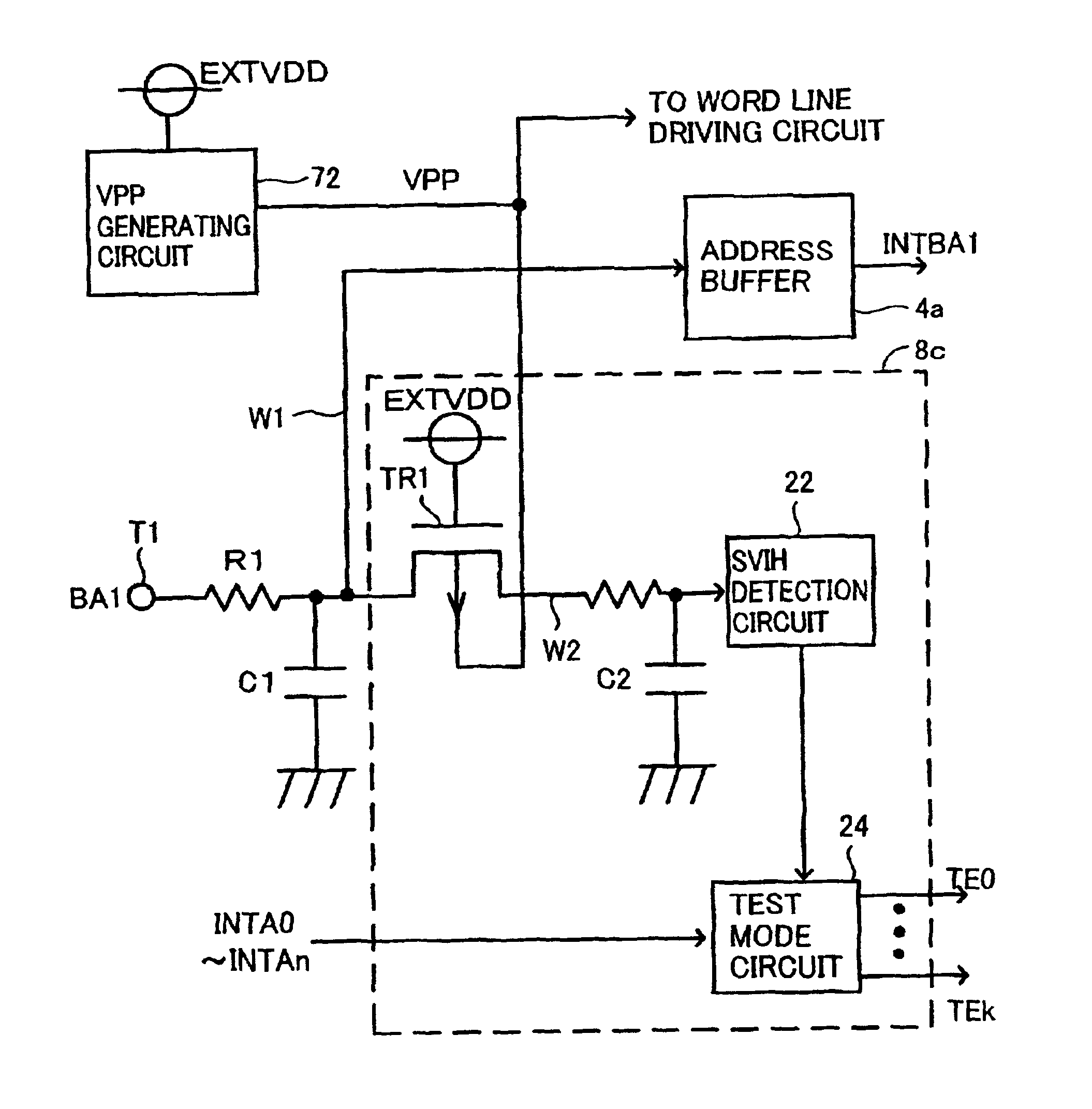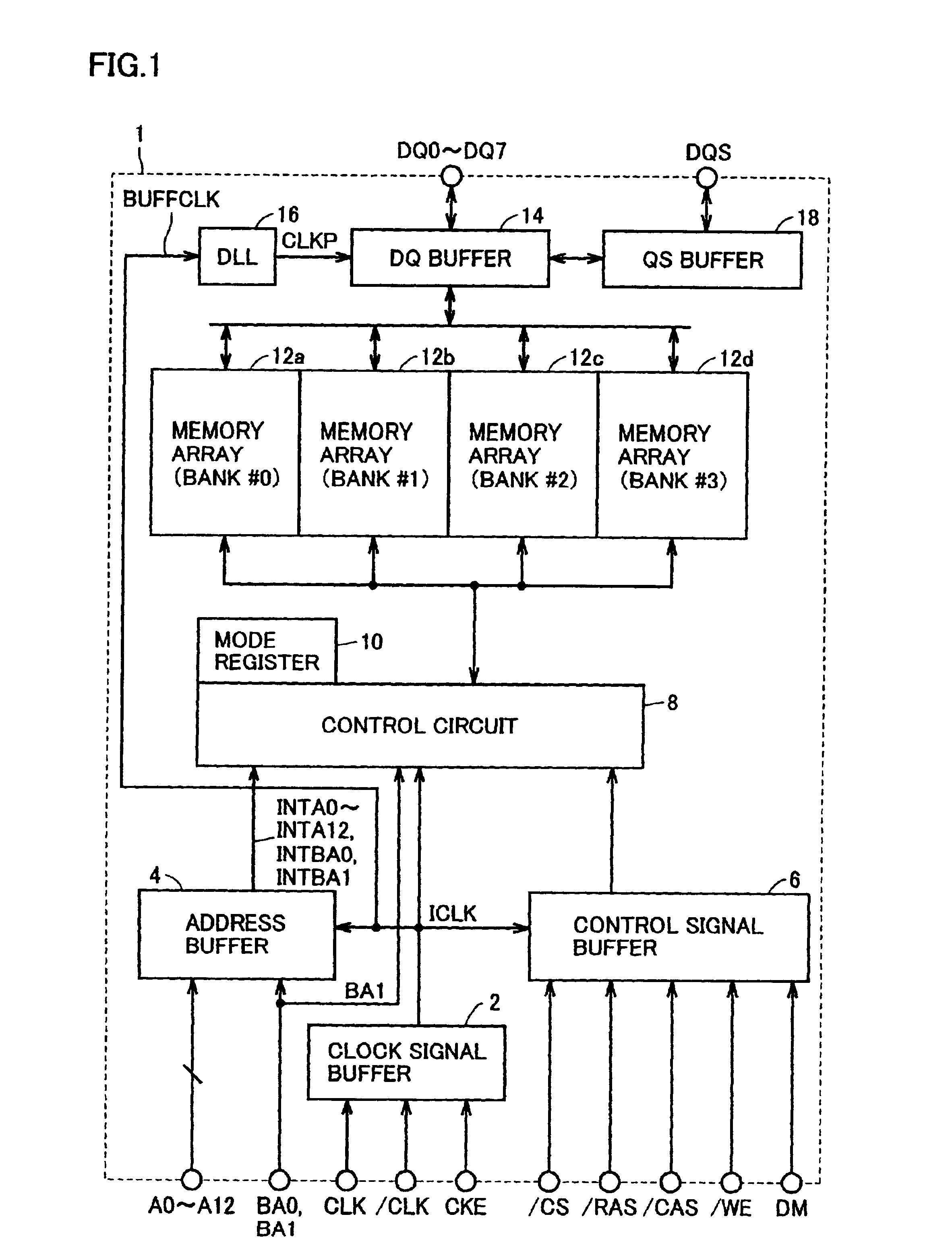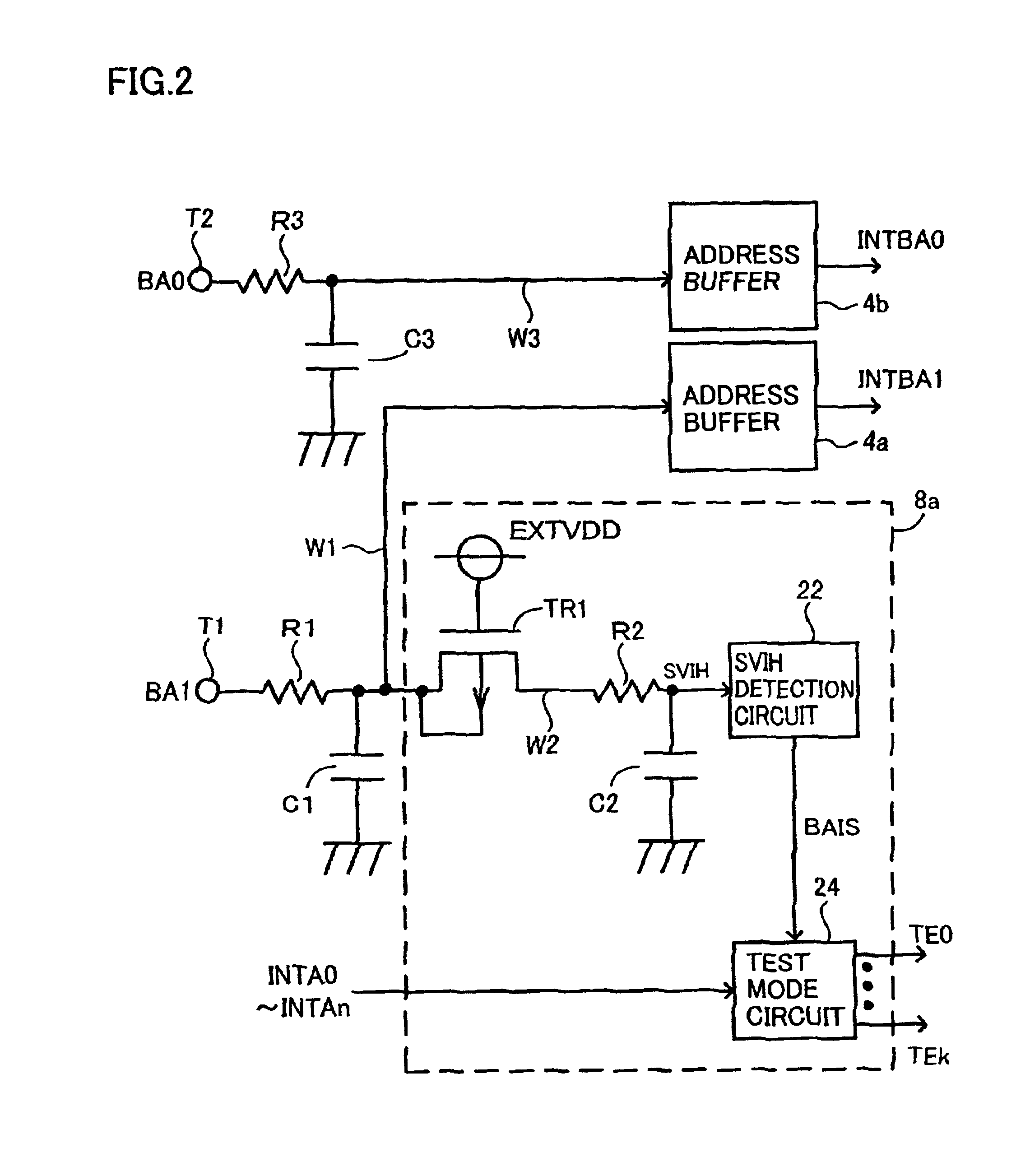Semiconductor device with reduced terminal input capacitance
- Summary
- Abstract
- Description
- Claims
- Application Information
AI Technical Summary
Benefits of technology
Problems solved by technology
Method used
Image
Examples
first embodiment
[0031
[0032]FIG. 1 is a schematic block diagram showing an arrangement of a semiconductor device 1 of the present invention. Specifically, semiconductor device 1 illustrated in the embodiment is a DDR SDRAM. The present invention, however, can be applied not only to a semiconductor memory device but also to a semiconductor device that needs to be set to a test mode and that requires an input terminal capacitance to be limited to a small amount.
[0033]Referring to FIG. 1, semiconductor device 1 includes an address buffer 4 for receiving external address signals A0 to A12 and bank address signals BA0, BA1 to generate internal address signals INTA0 to INTA12, INTBA0, and INTBA1, a clock signal buffer 2 for receiving external clock signals CLK, / CLK, and a clock enable signal CKE to generate an internal clock signal ICLK, and a control signal buffer 6 for taking in a chip select signal / CS, a row address strobe signal / RAS, a column address strobe signal / CAS, a write enable signal / WE, and a...
second embodiment
[0069
[0070]FIG. 6 is a schematic diagram related to the description of an arrangement for detecting a super VIH level of a semiconductor device according to the second embodiment.
[0071]Referring to FIG. 6, a DRAM, for instance, includes a VPP generating circuit 72 for receiving an external power-supply potential EXTVDD to generate a boosted potential VPP. Boosted potential VPP is used, for instance, as a driving potential of a word line for performing a row selection of a plurality of memory cells arranged in a matrix of rows and columns included in each of memory arrays 12a to 12d of FIG. 1. Boosted potential VPP is supplied from VPP generating circuit 72 to a word line driving circuit.
[0072]The semiconductor device according to the second embodiment includes a control circuit 8b in place of control circuit 8a shown in FIG. 2. Control circuit 8b differs from control circuit 8a in that a gate of a P-channel MOS transistor TR1 receives boosted potential VPP. The arrangement of contro...
third embodiment
[0078
[0079]FIG. 8 is a schematic diagram related to the description of an arrangement for detecting a super VIH level of a semiconductor device according to the third embodiment.
[0080]Referring to FIG. 8, the semiconductor device according to the third embodiment includes a control circuit 8c in place of control circuit 8b shown in FIG. 6. Control circuit 8c differs from control circuit 8b in that a gate of a P-channel MOS transistor TR1 receives a power-supply potential EXTVDD and a backgate is coupled to a boosted potential VPP. The arrangement of control circuit 8c in other portions is the same as that of control circuit 8b described with reference to FIG. 6 so that the description will not be repeated.
[0081]FIG. 9 is a cross sectional view related to the description of P-channel MOS transistor TR1 of FIG. 8.
[0082]Referring to FIG. 9, in the third embodiment, the gate of P-channel MOS transistor TR1 is coupled to power-supply potential EXTVDD. In addition, a well 54 is coupled to...
PUM
 Login to View More
Login to View More Abstract
Description
Claims
Application Information
 Login to View More
Login to View More - R&D
- Intellectual Property
- Life Sciences
- Materials
- Tech Scout
- Unparalleled Data Quality
- Higher Quality Content
- 60% Fewer Hallucinations
Browse by: Latest US Patents, China's latest patents, Technical Efficacy Thesaurus, Application Domain, Technology Topic, Popular Technical Reports.
© 2025 PatSnap. All rights reserved.Legal|Privacy policy|Modern Slavery Act Transparency Statement|Sitemap|About US| Contact US: help@patsnap.com



